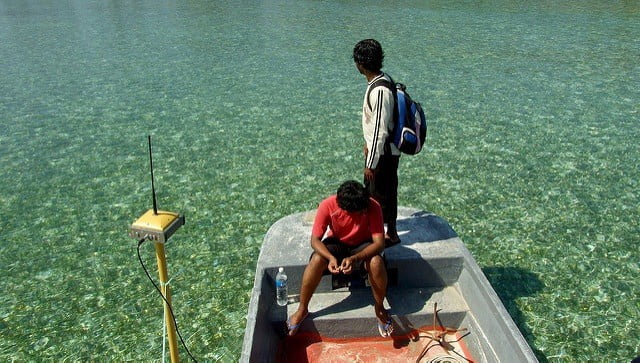Long gone are the days of just waiting around on a boat and hoping to catch fish. Playing the guessing game when you go out fishing is unnecessary if sonar is involved. Sonar, an acronym for Sound Navigation & Ranging, uses sound waves to navigate and detect objects either under or on the surface of water. For someone who fishes as a hobby or does it for a living, sonar is undoubtedly useful to have for fishing for its efficiency and ease of use. While it’s popular for fishing purposes, sonar can be used in so many ways every single day that might not be commonly known.
Active Sonar & Passive Sonar
Before we dive into how sonar can be used, first, know that there are two types of sonar technologies: active sonar and passive sonar. Active sonar emits an acoustic pulse underwater. If something is within the range of this pulse, the sound bounces back and returns an echo to the sonar transducer. When this happens, the transducer is able to measure the signal’s strength. The transducer can also determine the range and orientation of the object. This information is then displayed on a computer or phone screen.
On the other hand, passive sonar detects noise from objects and animals underwater. Just like its name implies, passive sonar listens to sound waves and doesn’t emit any of its own signals. Below, you’ll find out some of the different ways of how sonar is used on a daily basis.
Supporting Bathymetric Studies

Bathymetry is the study of underwater depth of lake, ocean, river and stream floors. Bathymetric maps show the land that’s underwater. It’s often referred to as the underwater equivalent to topography. Multibeam sonars have helped immensely in providing accurate results of the depths of sea floors so that scientists get a clearer picture of the land underwater.
Search and Rescue Missions
In search and rescue missions, a team would use sonar in combination with other technologies and methods to find and rescue a person. They would first determine the areas where objects are located underwater. With that information, they can derive where the person may be found. Instead of spending loads of time and effort aimlessly searching for someone in vast areas, sonar helps pinpoint objects and gives a team somewhere to start their mission.
Water Main Leak Detection
Pipelines often aren’t inspected often or at all due to costs, but this can lead to service disruptions. Draining money can be drained out of a city’s or business owner’s pockets if a water leak goes undetected for years.
A new form of high-resolution, high-frequency sonar can find the leak, in both small and large diameter water mains. Adjusting for things like pressure and temperature as part of the process. This technology brings attention to a small leak before it becomes big and disastrous. As a result, this helps to save tons of water and expands the lifetime of the pipes overall.
The pipe doesn’t even need to be already leaking. This sonar can perform condition assessments, looking for thin, brittle, rusted spots in water pipes even if they are hundreds of meters long.
Detecting Dangerous Objects Underwater
 Ensuring the sea is clear of dangerous explosives before laying down pipes or cables is an important task, and it all can be done with sonar. Unexploded explosives such as bombs and mines underwater can be detected and dealt with accordingly.
Ensuring the sea is clear of dangerous explosives before laying down pipes or cables is an important task, and it all can be done with sonar. Unexploded explosives such as bombs and mines underwater can be detected and dealt with accordingly.
Underwater Communication
Even though scuba divers can communicate with each other through hand signals, it would be difficult to see what’s being said when the waters are dark or murky. Underwater communication systems have been developed so that divers may communicate, no matter how far apart they are underwater. Here’s how it works. A diver will have a transducer attached to their mask which converts their voice into an ultrasound signal. The other diver who has an ultrasound receiver will accept the signal, which then converts it to a sound that they can hear. For communication in submarines, underwater telephone systems allow submarines to communicate with surface ships. These telephone systems transmit and receive sound waves.
Building a Strong Military Defence
Maintaining a strong defence against enemies includes the use of active and passive sonar systems. They help detect and track an enemy’s vessel or weapons such as torpedoes.




